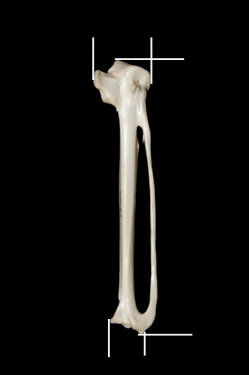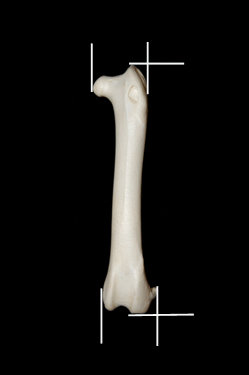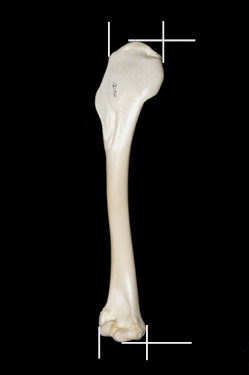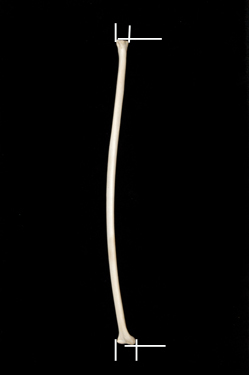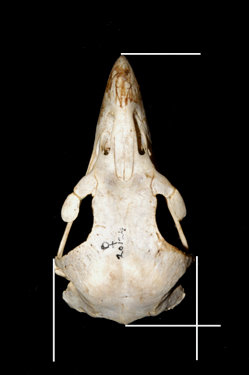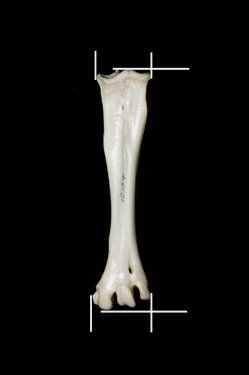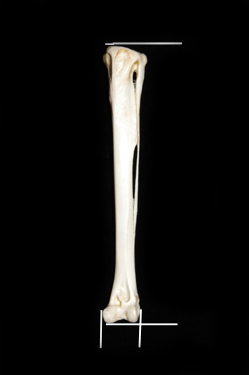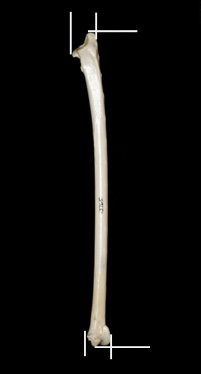
Methods Only the Falconiformes and Strigiformes of British Columbia are represented so far in this program. A target sample size of at least 10 males and 10 females is anticipated. Only adult, known sex specimens were measured. Measurements are taken from seven different long bones plus the skull. At least three measurements of each bone have been taken - the total length and width at the proximal and distal ends. The ranges of the length and widths of bones were taken to 100th of a millimeter and recorded in the species pages (See Measurement Points below). Means have been calculated. The "Comparative Pages" recognize measurements to the nearest centimeter. Ranges recorded in the guide are extended by 1 mm + and - in order to try and capture extreme lengths. Digital photographs of the front and back of each bone have been taken. The order of species follows the American Ornithological Union checklist.
Measurement Points:
References:
For more information please see FAQ's.
|
Copyright © Royal BC Museum. All rights reserved. | Privacy Policy | Copyright Policy |
